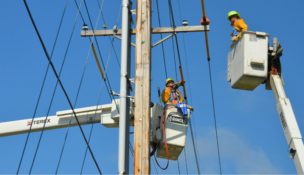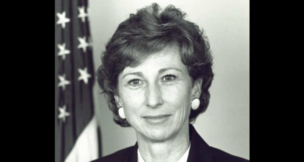Sponsor says ER medical malpractice bill will be back
Arizona Capitol Reports Staff//October 19, 2007//[read_meter]
Sponsor says ER medical malpractice bill will be back
Arizona Capitol Reports Staff//October 19, 2007//[read_meter]
A senior Republican lawmaker is preparing another push to raise the bar of proof of medical malpractice in emergency rooms.
The measure has already failed twice. Sen. Carolyn Allen, R-8, chair of the Senate Health Committee, said she is taking the issue “to the streets” next time around.
“I think that there is going to have to be from the general public more understanding,” she told Arizona Capitol Times.
The strategy is to build up public support for the measure, which would hopefully translate to enough votes in the Legislature to send it to the governor’s desk, Allen said.
“I’m going to write a lot of op-ed pieces. I’m going to go to different district meetings, particularly in the East Valley, and try to convince people this is not going to prevent anybody from filing a harmful lawsuit,” she said.
Allen’s bill, S1032, passed by a slim 16-12 margin in the Senate but failed in the House by a vote of 28-28 this past session. On reconsideration, it failed again by a vote of 26-29 in the House. (It takes 16 votes in the Senate and 31 in the House to pass a bill.)
The debate centers on whether the measure would help solve the lack of emergency room doctors in Arizona. Supporters say it would create an environment attractive to emergency room physicians. Critics say it would effectively bar people from suing a doctor, but won’t address the shortage of ER physicians.
The arguments from both sides are fierce. The Arizona Medical Association (AMA) says the group opposing it, the Fairness and Accountability in Insurance Reform or FAIR, is funded by trial lawyers. FAIR says the measure is backed by the insurance industry. Both sides have accused each other of using “scare tactics.”
“We are not going to have doctors 24-7 if we don’t do something to keep them in the emergency room,” Allen said.
That’s a “sham,” Jon Hinz of FAIR said.
“It doesn’t do anything except take away the rights of individuals that will be harmed and to grant immunities to the very worst of the worst doctors,” he said. “What they do is they use scare tactics, saying we won’t have any doctors.”
S1032 would have raised the burden of proof in medical malpractice civil actions against health professionals and hospitals involving certain emergency services to “clear and convincing evidence.” from a preponderance of the evidence.
Current state statute already requires “clear and convincing evidence” as proof in malpractice cases in emergency labor and delivery services, unless the attending health care provider has seen the patient regularly and has “reasonable” access to her medical information. The proposed legislation would have broadened circumstances this standard would apply to by narrowing the exemption to cases where a patient’s information is “immediately” available, rather than “reasonably” available.
In 1986, Congress passed the Emergency Medical Treatment and Labor Act (EMTALA), which mandates all hospitals participating in Medicare treat everyone who enters an emergency room, regardless of ability to pay. Hospitals and physicians are subject to civil penalties, and to exclusion from Medicare in some cases, for violations of this federal law.
Arizona statute requires the following elements of proof for medical malpractice cases: that the health care provider failed to act as a reasonable and prudent provider would have under the same circumstances, and that this failure was a proximate cause of the injury.
In 2006, Gov. Janet Napolitano vetoed legislation similar to S1032.
“There is no disagreement that the unfunded federal mandates of EMTALA, coupled with the decrease in reimbursement rates and the rise of specialty surgery centers, have led to shortages of on-call specialists in our emergency rooms,” Gov. Napolitano wrote in her veto letter last year.
“No data has been supplied to me, however, to suggest that raising the burden of proof would, alone, cure these problems,” she said.
Napolitano went on to say former justices of the Arizona Supreme Court also wrote to express concern over the vetoed bill’s constitutionality.
Prominent lawmakers in the Senate voted against S1032, including Senate President Tim Bee. Senate Minority Leader Marsha Arzberger, who also voted no, told the Capitol Times it was virtually the same as the vetoed bill.
“I think that’s unfortunate,” she said. “I read the Task Force’s (report). I would have liked to have seen some of the recommendations of the Task Force.”
Indeed, Hinz made the same complaint when told that Allen will reintroduce the medical malpractice bill. He said the governor’s task force had numerous suggestions how to address the shortage of ER physicians, but this recommendation — raising the burden of proof to clear and convincing evidence in medical liability cases — was challenged by other members.
“Why in the world Senator Allen wants this before they addressed any of those that are unanimously recommended, to be honest, makes me mad as hell,” he said.
But Chic Older of AMA said the measure is all about creating an environment that would attract physicians who want to practice in emergency rooms.
“We felt that having a change in the tort law like this, and allowing physicians to know that in the worst case scenario, that is, a traumatic emergency, they are going to be held to a reasonable standard and are not going to have to worry about a bad outcome, our feeling was this would help attract physicians to Arizona who want to be emergency physicians,” he said.
“That was No. 1, it (would) create a more attractive environment for hiring these people,” he said.
The Arizona medical community is based on a complex system of specialists and sub-specialists, he said.
“We feel that those specialists and sub-specialists, the most highly trained, the person you want to see for your catastrophic or very difficult emergency, are no longer willing to come into the emergency room facility for fear of being sued,” he said.
The measure would “create and send a signal from the state to the physician community, saying, ‘Please come back,’” Older said.
But the AMA official acknowledged that the medical emergency bill is a tough sell. People do not normally think about the emergency room, he said.
“The only time you worry about it is if you or a member of your family is in one. So you can understand how difficult it is to say and convince people, ‘what if,’” he said.
But the problem is very real, and, in fact, the situation has gotten worse, he said.
The news pages are replete with stories about the lack of ER specialists. Recently, the Arizona Daily Star ran a story about the possibility of a patient not getting a specialist when seeking emergency care in Tucson.
“At any given time in a Tucson ER,” the Star reported, “there will be no neurosurgeon to stop your bleeding brain, no plastic surgeon to fix your flailed flesh, no orthopedic surgeon to handle your complex fracture, no gastroenterologist to stem your internal hemorrhage, no hand surgeon to save your mangled fingers.”
Aware of the problem, Napolitano created a group to look into the situation in 2006. Later that year, the Emergency Medical Services Access Task Force reported there is a huge demand for health care services as the state’s population grows, but there is a limited supply of doctors.
In fact, the state’s physician workforce had grown from 8,026 doctors in 1994 to 12,121 doctors in 2004, outpacing the growth of the state population.
This resulted in an increase in t
he physician to population ratio of 208 per 100,000 in 2004 from 190 per 100,000 in 1994.
In 2005, the ratio was 219 doctors per 100,000 people.
But the 2005 figure is well bellow the national average of 293 physicians for every 100,000 people. That year, the state lacked more than 2,200 doctors.
Also, all or part of every county in Arizona has been designated as a Health Professional Shortage Area, the report said.
The Task Force attributed the shortage of physicians to the limited number of graduate schools and resident training positions, the state’s medical liability environment, the low physician reimbursement for health care services, and the barriers to licensing and managed care credentialing.
The task force also found that physicians are reluctant to provide on-call services in emergency rooms and trauma centers.
“To begin with, physicians often find emergency service unattractive because it involves disruption to both personal life and private practice,” the report said.
There are complicating factors, such as overcapacity of inpatient and emergency units, the lack of medical history of emergency patients, and uncompensated care for hospitals and on-call physicians.
A prevailing complaint is increased exposure to medical liability.
“In a recent informal survey conducted by the Arizona Medical Association, 23 percent of physicians who do not currently take emergency department calls stated that the primary reason was increased medical liability exposure,” the report said.
To address the doctor shortage, the task force recommended increasing the number of graduate medical programs and resident slots, since studies show that physicians who train in a state are more likely to practice in that state.
It recommended increasing the number of medical schools, particularly expanding the capacity of the Phoenix campus of the University of Arizona Medical School.
The task force suggested establishing a “one-stop shopping” service for licensure and credentialing to attract physicians from other states to Arizona, providing incentives to retired and part-time physicians so they would continue their practice, and more effectively utilizing nurse practitioners.
To increase the number of emergency room physicians, the task force recommended a more specific study group to look into the reimbursement system, suggesting the committee study should consider tax credits to physicians in relation to on-call services.
The task force’s most controversial recommendation is to increase the burden of proof to “clear and convincing evidence” in medical liability cases involving emergency care — the subject of S1032.
“The majority of the EMSA Task Force members believe that this reform is necessary because emergency department patients present unique challenges that make physicians less willing to assume their care, yet preserves the right of emergency patients to receive compensation in the event of clear and convincing evidence for a malpractice event,” the report said.
The idea had divided the task force. A minority report was issued.
Changing the burden of proof to clear and convincing evidence will “clearly eliminate legitimate cases of medical negligence from being heard in our courts – even when gross negligence is committed,” the minority report said.
“Without a doubt, this can allow negligent hospitals, HMOs, and medical professionals completely off the hook even when they caused a patient’s injury or death,” the minority opinion continued.
Older rebuts charges made against the medical malpractice bill. One argument is that it is backed by the insurance industry. Another is that it will not lead to the lowering of insurance premiums.
“That is a flat out fiction,” he said of the first charge. The bill was generated out of the medical community, he said. “To suggest that the insurance industry is behind it is absolutely false, without basis, and again, designed to create the fiction of a bogeyman.”
Older also said neither the AMA nor Allen ever touted the measure as “anything other than trying to create availability and quality of emergency services.”
“We have never testified or even remotely suggested this is going to save anybody five cents. It’s all about availability,” he said, adding FAIR knows it but “this is their lobbying strategy.”
The main argument against the measure is that, with the high standard of proof, the legislation would effectively bar anyone from suing a doctor.
“Anyone reading the bill can see this does not take away anyone’s right to sue. It never has. It never was contemplated [that way]. It won’t,” Older said, adding the standard they want to set is reasonable.
Hinz disagrees
“They keep saying we are just raising the standard a little bit. That’s not true,” Hinz said. “They are eliminating the right to sue.”
It also has nothing to do with bringing doctors to rural areas, he said, adding the state should come up with different answers. He suggested tax breaks to new medical students or tuition refunds if they spend a number of years in a rural hospital.
Hinz said when Allen pushes for her legislation anew, his group would be there to counter it, he said.
“I’ll be happy to debate her at any of those meetings. If she will invite me, I will be there,” Hinz said.
The bill’s proponents would have to convince lawmakers like Sen. Jorge Luis Garcia, D-27, of its soundness. Garcia who voted against S1032 this year, says he does not see a dearth of specialists in ER rooms, but specialists who do not like to work in emergency centers because they want regular office hours and prefer not to work at night.
“Let me tell how I will support it,” Garcia told the Capitol Times. “If, indeed, the premise is that by (raising) the standard we will get more physicians, more specialists, into the emergency room, I want to see something in the law that says that if we are doing this, physicians — the specialists — have to do emergency room service.
“Then I’m going to buy that. But until then, that’s just somebody saying, hey, here’s some sugar.”
















